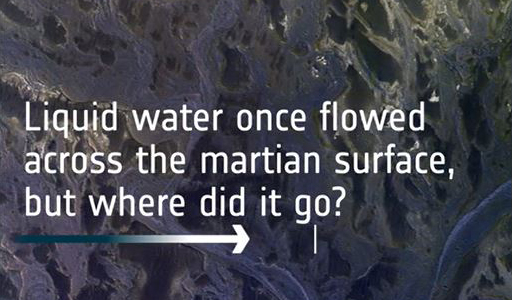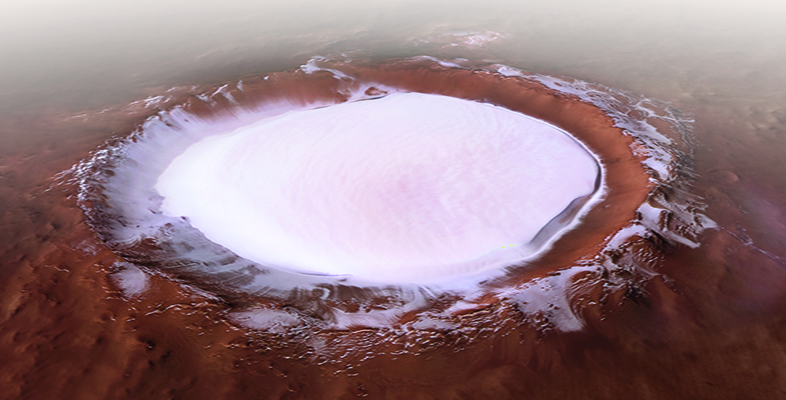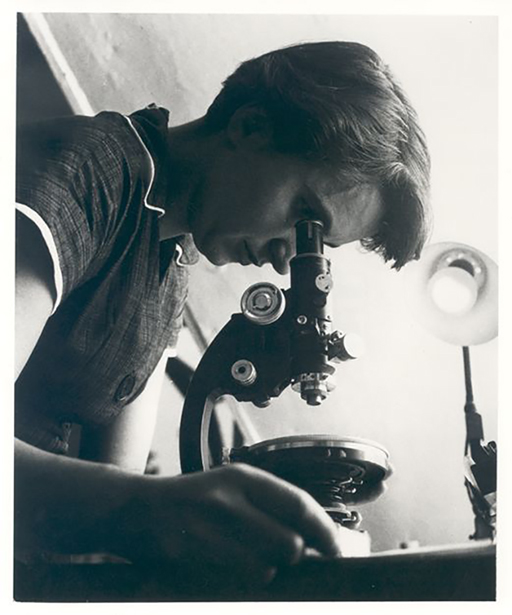4.10 Observations from space continue
While Curiosity began exploring the martian surface, the ExoMars 2016 orbiter was launched. This is the first mission in the joint ESA-Roscosmos ExoMars programme, with an objective to determine whether life ever existed on Mars. It carries the Trace Gas Orbiter (TGO), which is a suite of instruments designed to detect gases that may indicate the presence of life or geological processes operating on Mars.
One of those instruments, NOMAD (Nadir and Occultation for MArs Discovery) can map the distribution of gases in the martian atmosphere. It has observed seasonal variations in the transport of water vapour high into the martian atmosphere and confirmed that water can escape to space. This finding is important for understanding where and how Mars might have lost its water in the past and how this might have affected the habitability of the planet.
Activity 6: Lost water
Watch the following video that explains how ExoMars is investigating how water might have been lost from Mars’ surface.

Transcript: Video 4 Tracking the history of water on Mars.
[Music playing]
[Text on screen:]
Tracking water loss on Mars
Liquid water once flowed across the martian surface, but where did it go?
Some water is in ice caps and underground, but water loss still occurs today
The ESA-Roscosmos ExoMars Trace Gas Orbiter is providing data on Mars’ climate evolution and its habitability potential
ExoMars is following the vertical path of water through the atmosphere and its changing isotopic composition
As water moves to colder regions it condenses and its isotopic composition changes
Independent of reservoir, and over time, the ratio of D to H atoms increases
Today, the D/H ratio is about six times higher on Mars than Earth indicating great water loss
Water loss is accelerated during dust storms when the atmosphere is warmer
Southern summer drives water loss as the pole is heated up
ExoMars will continue to provide new insights into the history of water on Mars
The TGO has also detected hydrogen chloride (HCl) in the atmosphere that probably resulted from the interaction between dust from the surface and water vapour in the atmosphere. This might be a mechanism for producing the perchlorates detected by the Phoenix mission [Tip: hold Ctrl and click a link to open it in a new tab. (Hide tip)] .
The next mission in the ExoMars programme will carry the Rosalind Franklin rover that will land in a region called Oxia Planum. Oxia Planum was chosen – once again – for the signs of water that shaped the features in the landscape, and for the clay minerals found by orbital investigations. The Rosalind Franklin rover will carry a drill that can reach 2 metres below the subsurface. It will take samples, hopefully containing organic matter, that have been shielded from the harsh environment of space radiation. It will also carry a radar instrument to investigate the subsurface, to identify where water may be present – possibly as ice – but not detectable above ground.
What’s in a name?
You may be wondering where the ExoMars rover got its name. Rosalind Franklin was a British chemist and pioneer of a technique known as X-ray diffraction, which can be used to understand the internal structure of crystals. She began using this to understand the structure of coal but then applied this to understand the structure of DNA. Indeed, she was the first person to photograph DNA, determine its dimensions and unravel it’s double helix structure.
Since the rover’s main objective is to look for signs of life, it is named in honour of the scientist who first determined life’s fundamental building blocks.
You can read more about Rosalind Franklin here.
ESA is not the only space agency embarking on their own Mars exploration programme. The United Emirates’s launched their first Mars orbiter - the Hope probe, which entered Mars orbit in 2021. This will investigate the martian atmosphere from a different orbit to the existing orbiters, to assess weather and climate systems and understand the evolution of the martian atmosphere.

